What is Coppicing?
Quite often on WalkingSticks.co.uk you'll find the more natural walking sticks described as 'produced from coppiced wood', which means that those sticks are not only unique, but often also left completely unadorned, featuring a naturally rich texture. If you've been wondering what coppicing even is, or what it could possibly have to do with walking sticks, our short guide is here to explain this interesting and effective technique.
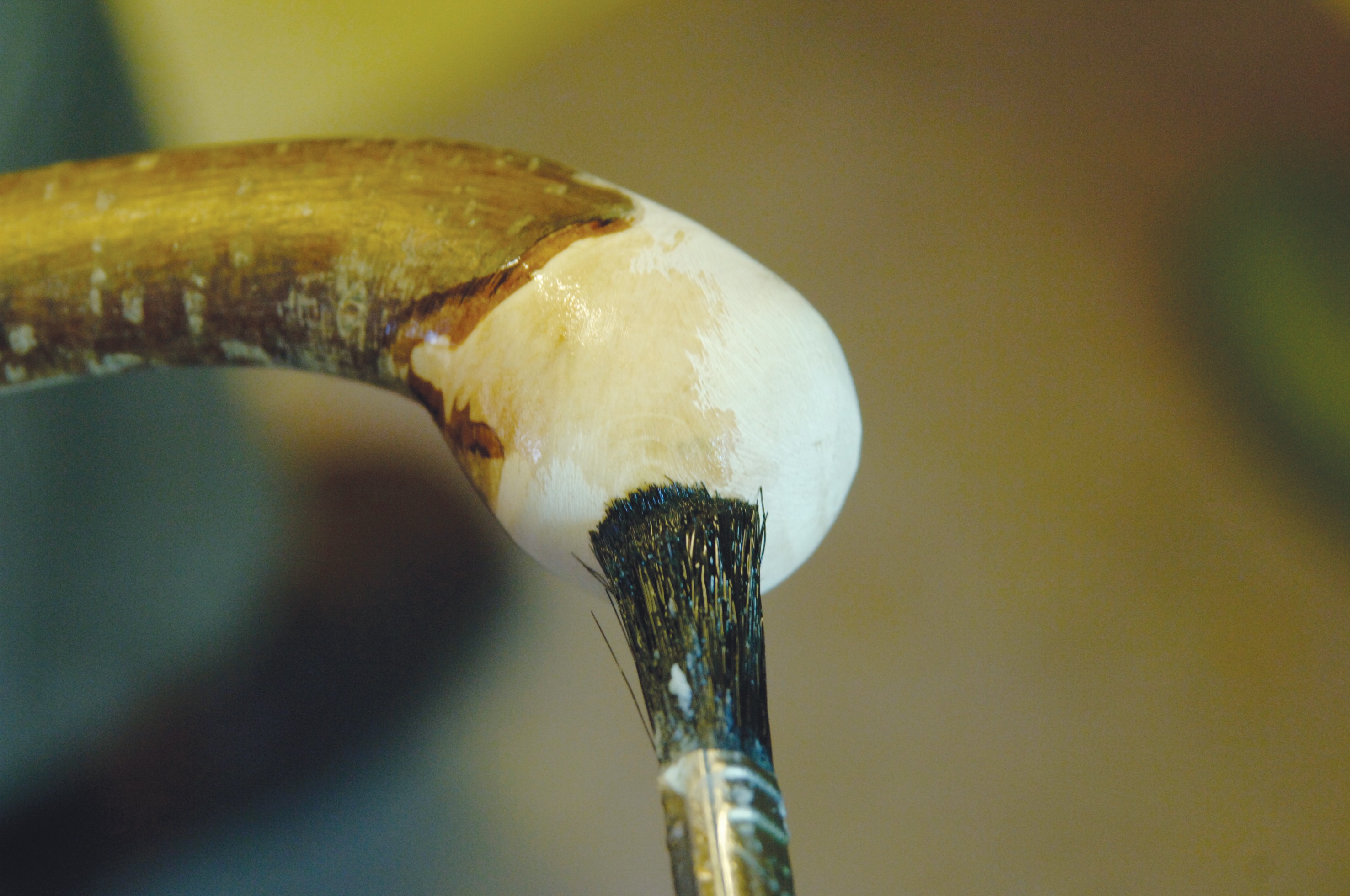
Coppiced walking sticks are often handmade.
What is Coppicing?
Coppicing is a traditional, widespread method of woodland management that includes repetitive felling on the same stump, allowing the shoots to regrow. This produces large amounts of high-quality timber without the need to replant, which is both cost- and time-effective.
Environmental Benefits of Coppicing
As well as producing gorgeous natural country walking sticks, coppicing has many environmental benefits. By allowing light and warmth to reach the forest floor, native wildflowers such as primroses, wood anemone, dog violets, orchids and British bluebells can flourish.
In turn, this enables a healthy population of native fauna to make their home here. Creatures including woodland butterflies and beetles, woodpeckers, tree creepers and owls, foxes, badgers and deer all thrive in this traditional environment.
Coppicing and Walking Sticks
Coppicing with the purpose of producing natural, handmade walking sticks is a process that requires both time and patience. Once coppiced, it takes the shoots three to four years to grow to an appropriate height and diameter to form walking sticks. The wood is harvested in the winter, when the weather is cold and the sap down in the trees.
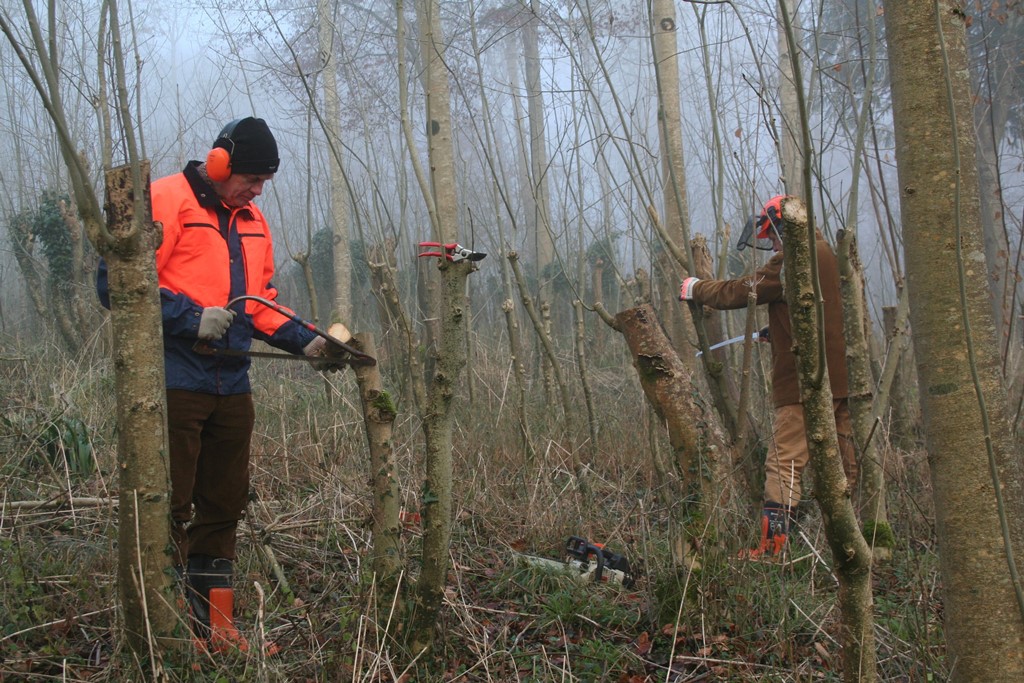
Coppicing involves cutting a tree to generate a renewable crop of usable shoots.
Once harvested, the sticks are then dried for a minimum of one year and often longer before each stick is steamed, straightened and finished. This ensures maximum quality of your walking stick.
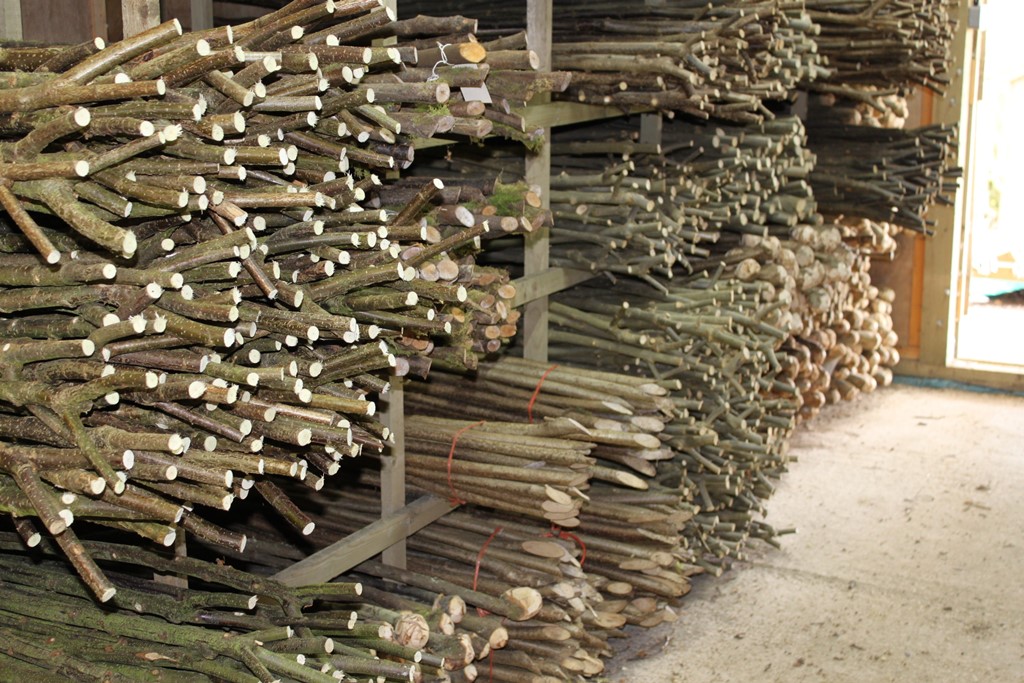
Sticks in the drying room.
Each stick is assessed and treated as an individual to make the best use of the material. There is a lot of hand work involved, from steaming to sanding and varnishing. This ensures each walking stick is unique.
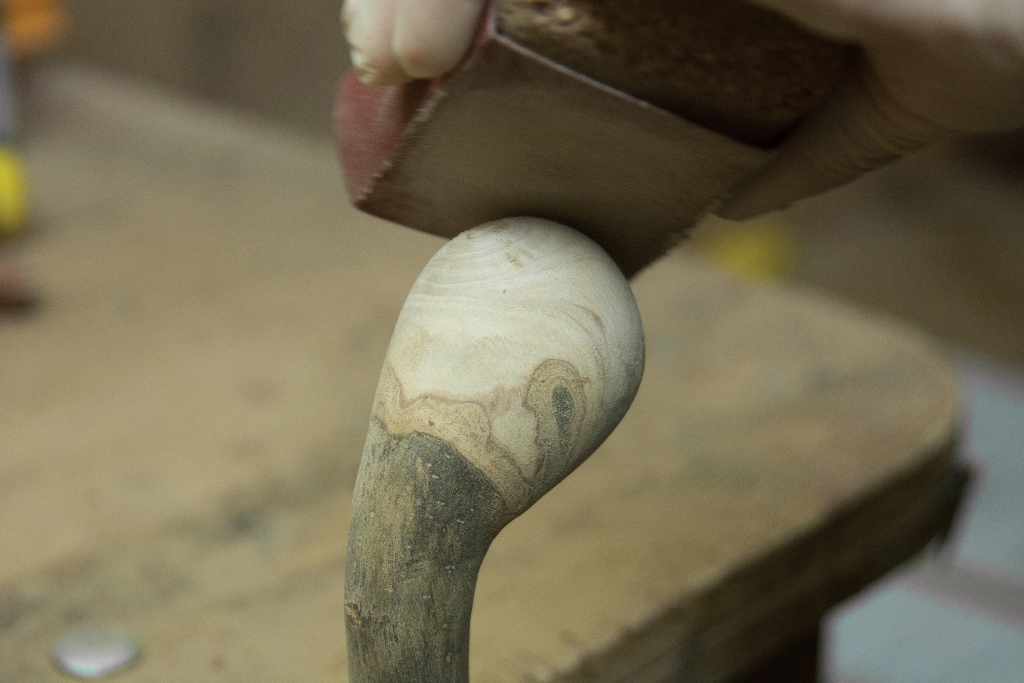
Sanding of an ash knobstick.
The most commonly used types of wood for the making of walking sticks are oak, hazel, ash, blackthorn, willow and sweet chestnut. When everything goes smoothly, the long process usually produces natural knobsticks, thumbsticks or staffs.
Natural Knobsticks
The knob handle is formed from the parent tree, which means the walking stick is in effect grown upside down. Most often the knob is polished to perfection, to make the handle smooth and comfortable to hold.
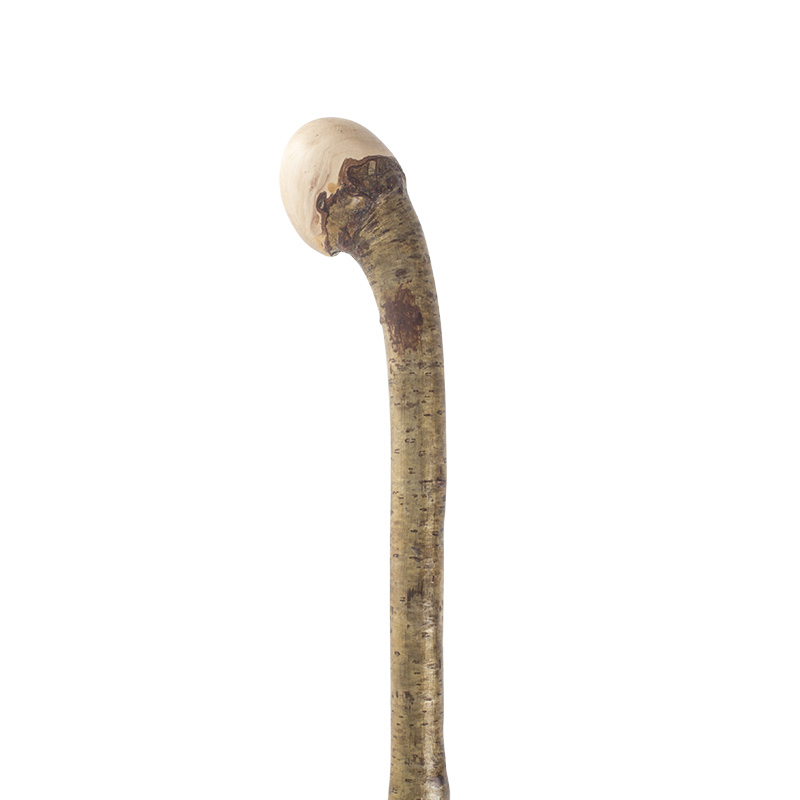 This Hazel Coppice Knobstick is a classic example of a natural knob handle that has been grown from a hazel tree. The handle has been polished for a smoother touch, while the shaft is covered with natural bark, giving the stick a uniquely rustic appearance.
This Hazel Coppice Knobstick is a classic example of a natural knob handle that has been grown from a hazel tree. The handle has been polished for a smoother touch, while the shaft is covered with natural bark, giving the stick a uniquely rustic appearance.
Natural Thumbsticks
Naturally grown thumbsticks are the hardest to find, as they require the shoot to splint into two sections for the natural V-shape to occur. The thumbstick is one of the most classic British handles and is both visually appealing and comfortable to hold.
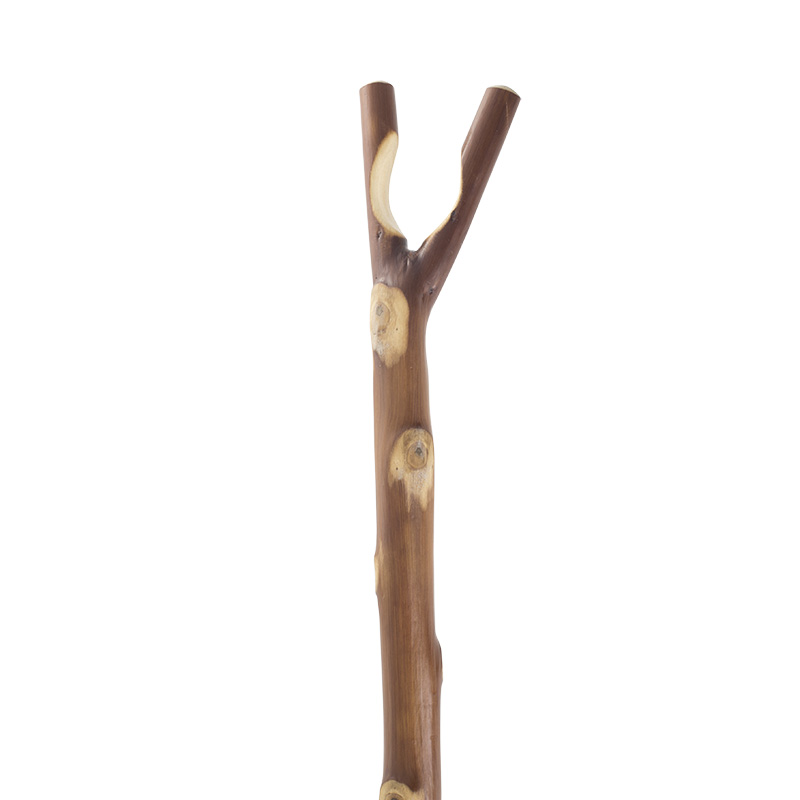 Made from chestnut wood and left with the attractive bark on, this Chestnut Thumbstick Hiking Stick is a wonderful example of a perfectly natural V-shaped walking stick. Chestnut is one of the woods that responds very well to coppicing and is great for producing strong and durable walking sticks.
Made from chestnut wood and left with the attractive bark on, this Chestnut Thumbstick Hiking Stick is a wonderful example of a perfectly natural V-shaped walking stick. Chestnut is one of the woods that responds very well to coppicing and is great for producing strong and durable walking sticks.
Hiking Staffs
Most often the coppicing technique produces a hiking staff. Strong and durable, with an attractive rustic look, naturally grown staffs are the perfect accessory to complement any hiking outfit. As they grow quite easily, staffs can be made from a variety of interesting woods.
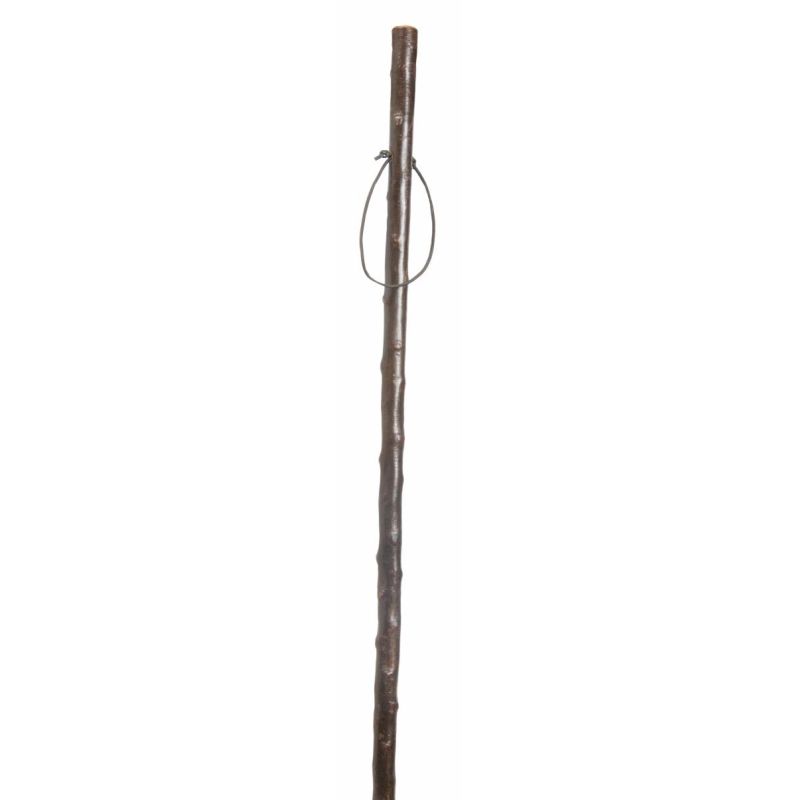 Quickly growing in popularity, hazel is an excellent wood for coppicing, and produces sticks with striking dark tones and a sturdy, supportive feel. Valued for its unusual colouring, texture and grain, the wood used in this Hazel Hiking Staff exemplifies why so many hikers prefer this simple natural style.
Quickly growing in popularity, hazel is an excellent wood for coppicing, and produces sticks with striking dark tones and a sturdy, supportive feel. Valued for its unusual colouring, texture and grain, the wood used in this Hazel Hiking Staff exemplifies why so many hikers prefer this simple natural style.
Canes grown using the coppicing method have a very specific appeal that calls for a more acquired taste. If you feel that rustic walking sticks fit your style, make sure you explore our broad range of Natural Wood Walking Sticks.
Have any questions, or something to add? Leave us your thoughts in the comments section below!
